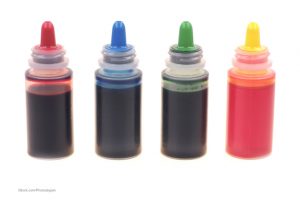The Food and Drug Administration has found that 96% of children age 2 to 5 years are exposed to food dyes. Center for Science in the Public Interest petitioned the FDA in 2008 asking to ban eight of the nine certified color additives.
 CSPI senior scientist Lisa Y. Lefferts said in a statement, “such widespread exposure to artificially colored foods is bad news for all children, since artificially colored foods aren’t healthy foods in the first place. The FDA is failing kids and parents by allowing the use of these purely cosmetic chemicals in food, which trigger behavioral problems in some children, as even FDA conceded in 2011.”
CSPI senior scientist Lisa Y. Lefferts said in a statement, “such widespread exposure to artificially colored foods is bad news for all children, since artificially colored foods aren’t healthy foods in the first place. The FDA is failing kids and parents by allowing the use of these purely cosmetic chemicals in food, which trigger behavioral problems in some children, as even FDA conceded in 2011.”
The full results of the exposure assessment have not been published. The assessment was based on the amount of color additives in almost 600 food products and data from a two-day period of the 2007-2010 National Health and Nutrition Examination Survey of food consumption. The government has assembled a poster that gives the background, exposure assessment, and results.
There are currently nine color additives approved for use in food in this country. Seven are for general use in food at levels consistent with good manufacturing practice, and the other two are regulated for specific uses. A 2007 Southampton study reported a connection between Yellow No. 5, Yellow No. 6, Ponceau 4R, Carmoisine, Yellow No. 10, Red No. 40, and possible adverse behavioral effects.
The FDA’s Center for Food Safety and Applied Nutrition’s Food Advisory Committee concluded in 2011 that no causal link could be established between this exposure to these compounds and adverse behavior, including hyperactivity. At that time, the committee recommended additional research. The government will estimate exposure using 14-day food consumption data and the FDA will reassess safety studies on these additives in its files. They do state that “All exposure estimates for these color additives are well below the acceptable intake levels that have been established by FDA.”
The European Union has banned some of these dyes from food products and require warning labels on some foods because the dyes have not been proven safe, which is the opposite tack from the FDA’s approach. This precautionary principle states that if human health is at risk, protection action should be taken even if there is no scientific certainty.




